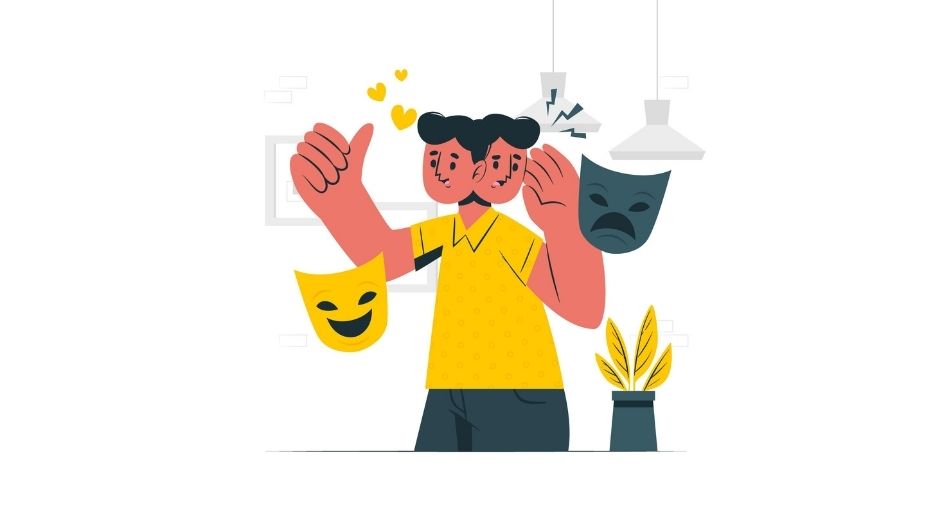
What is Pediatric Bipolar Disorder? How is it treated?

What is Pediatric Bipolar Disorder?
Pediatric Bipolar Disorder is a chronic and debilitating episodic mood disorder characterized by episodes of mania and depression. It is often associated with impairments in biological, social, and academic dysfunction in children and adolescents.
How is Pediatric Bipolar Disorder different from those seen in adults?In Pediatric Bipolar Disorder, the mood episodes are of a shorter duration (e.g., ultradian cycling) and there is an elevation of mood vs irritability, as compared to adults with the same disorder.
What are the two broad phenotypes found in Pediatric Bipolar Disorder?The “narrow phenotype” is characterized by:
- Recurrent episodes of mania and depression
- Manic episodes characterized by elevated/expansive mood and grandiosity
The “broad phenotype” is characterized by
- Chronic severe mood dysregulation
- Hyperarousal
Diagnostic Issues are frequently encountered while treating those in the pediatric population, hence, the Alexian Brothers Protocol recommends clinicians to focus some of the highly specific symptoms of the disorder and they are as follows:
- Decreased need for sleep (characterized by excessive talking, texting, playing, and gaming that is past one’s bedtime)
- Grandiosity or Unstable sense of self/self-esteem (making unsubstantiated statements that are beyond one’s developmental levels)
- Elated mood (excessive and inappropriate excitement, silliness, laughter, giddiness, and making jokes)
- Hypersexuality (developmentally unusual, atypical, or uncharacteristic sexual behavior that is pleasure driven)
- Increased pressure of speech and racing thoughts (constant talking, dominating conversations, and attention seeking behavior)
- Goal directed activity (increased overall activity levels, including academic and play related, which may not be productive or of high quality)
- Pervasive low mood with crying spells
- Marked decrease or loss of in interest in or all pleasurable activities, sometimes expressed by boredom
- Irritation or agitation
- Sleep disturbances in the form of either sleeping too much or the inability to fall asleep
- Significant change in appetite in the form of loss of appetite
- Change in observed activity level (usually slowed down or dragging)
- Loss of energy
- Excessive fatigue
- Inability to sustain attention for longer periods of time
- Feelings of worthlessness or guilt
- Thoughts of self-harm, death wishes, suicide, or self-destructive behavior
- Higher rates of psychotic symptoms can be observed in adolescents with pediatric bipolar disorder than compared to those in children
- Grandiose delusions (delusions of power, sense of self-worth, knowledge, family, and relationships), Persecutory delusions, flight of ideas, and hallucinations are some of the most commonly occurring psychotic symptoms prevalent during the manic episodes
- elevated, expansive, or irritable mood
- inflated self-esteem or grandiosity (an unrealistic sense of one’s capabilities)
- significantly decreased need for sleep
- being more talkative or pressured speech (would override or appear domineering in conversations)
- racing thoughts that often appear disconnected or flight of ideas
- distractibility
- excessive involvement in multiple projects and activities
- Indulging in high-risk pleasurable activities such as using and abusing psychoactive drugs, consuming large amounts of alcohol, or indulging in unprotected sexual activity
- In adolescents with severe depressive episodes, psychomotor retardation, hypersomnia, and psychosis are frequently seen.
- ADHD
- Conduct Disorder
- Oppositional Defiant Disorder
- Anxiety Disorders
- Genetic Factors: Offspring of parents with bipolar disorder have a chance of 25% of having a mood disorder when one parent is diagnosed with bipolar disorder and a 50 to 75% chance when both mothers and fathers have bipolar disorder.
- Neurobiological Factors: neural circuitry dysfunction in the areas of amygdala, thalamic areas, prefrontal cortex, and striatum (caudate nucleus, nucleus accumbens, putamen)
- Neuropsychological Factors: emotion recognition errors and impaired perception of facial expressions
- Life Events: related to loss of primary object figures (attachment figures) through death, separation, divorce
A combination of pharmacotherapy, individual therapy, and family-based interventions works best in the treatment of Pediatric Bipolar Disorder
- Studies have shown that three categories of medications are most effective in the treatment of Pediatric Bipolar Disorders
- They are 1. Lithium, 2. Antiepileptics and 3. Second Generation Antipsychotics
- Mood stabilizers particularly Lithium and Sodium Valproate have been effective in the treatment of bipolar disorder in adults, as they act as prophylactic agents. Randomized controlled trails in pediatric bipolar disorder have shown that lithium has been effective in reducing aggressive behavior that occur during the manic phases of the disorder.
- An 8-week open label trail consisting of 20 adolescents who received 130 mg of Lamictal (Lamotrigine) showed that Lamictal was effective in the treatment of depressive episodes of the bipolar disorder. Children and adolescents who received this medication experienced lesser weight gain, rashes and lesser adverse side-effects due to the drug.
- Atypical antipsychotics (such as Risperidone, Olanzapine, Quetiapine) when augmented with mood stabilizers have also proven to be effective in the treatment of manic and depressive episodes of pediatric bipolar disorder.
- Treatment of comorbid ADHD after the stabilization of mood symptoms in pediatric bipolar disorder becomes an essential component
- A modified version of family-focused psycho-educational treatment (FFTA) by D.J. Miklowitz has been shown to reduce the rates of relapse in pediatric bipolar disorder
- Biological Interpersonal Social Rhythms Therapy that focuses on stabilizing the patients biological (Circadian Rhythms) and Social Rhythms by teaching the patient interpersonal skills
Looking for psychiatric consultation in Bangalore? Please book your consultation here with our team of expert therapists- https://mpowerminds.com/best-psychiatrist-in-bangalore/
About the Author-
Dr. Poornima is a clinical psychologist, who specializes in Child and Adolescent Psychology. She has worked on research projects in the area of Autism Spectrum Disorders at the Dept. of Child & Adolescent Psychiatry. She has also worked on research projects at the OCD Clinic, NIMHANS. Along with research, she has had experience in teaching M.Sc Psychology at the Indian Institute of Psychology and Research. She has attended various National and International Conferences in the field of Clinical Psychology and published papers. Although her training has focused on Cognitive Behavioural Interventions, she tends to use an Eclectic approach while providing Intervention to her clients.
Image credits - Freepik

Mpowering Minds 2026 – Women’s Mental Health Summit: Championing a New Era of Well-Being
Therapy Approaches That Help Heal Intergenerational Trauma: CBT, DBT, Somatic Work & More

